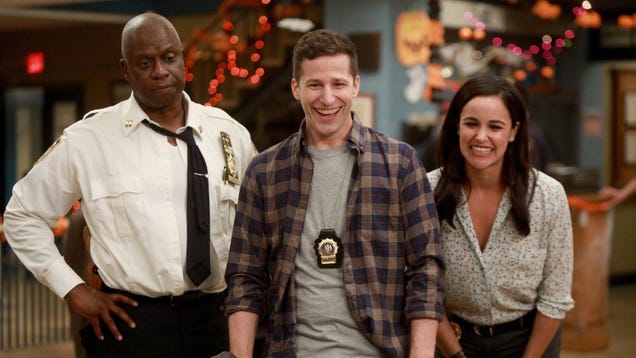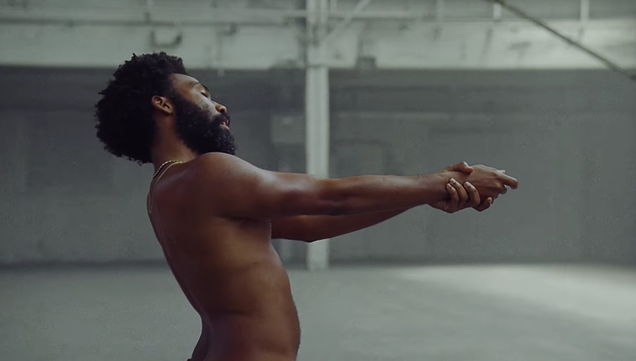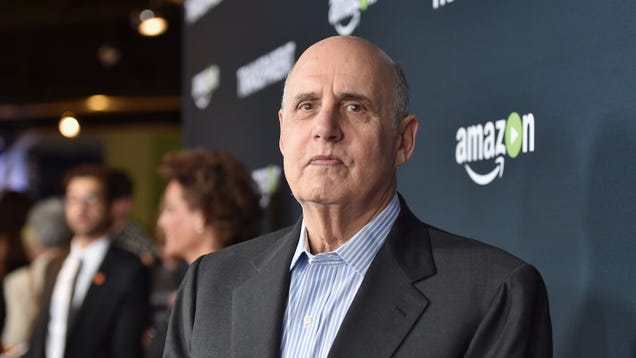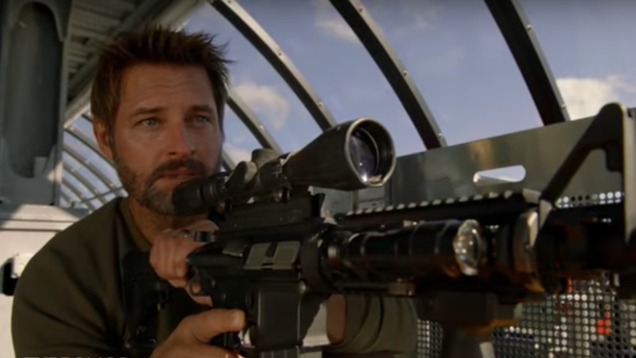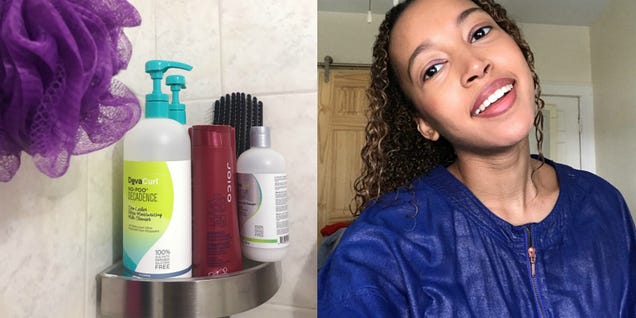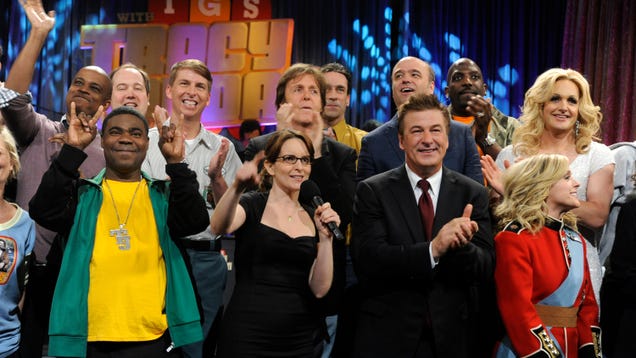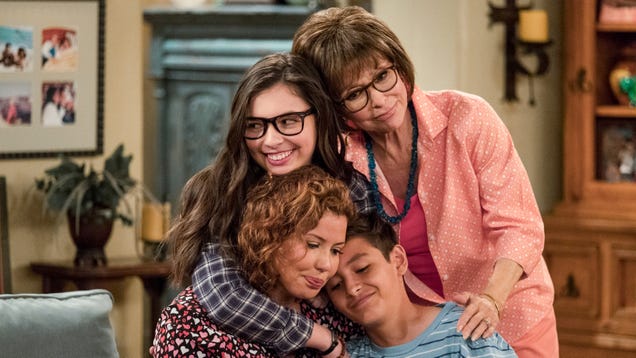Supernatural’s hotly anticipated Scooby Doo episode airs this week. We’ve seen it already, so in true crossover form, two writers with very different priorities teamed up to review ‘ScoobyNatural’ from their respective corners.
In thirteen long years of a world where – somehow – absolutely anything is possible, you’d think Supernatural has done pretty much everything there is to do. Creeping up on 300 episodes, you’d think they’d have pulled every trick in the book. Time travel? Many times. Alternate universes? You betcha. Back from the dead? Puh-lease.
De-aging, old-aging, body swaps, possession, fourth-wall breaking, surprise siblings, Groundhog Day, parody versions of their actual real-life selves… But they’ve never done a musical episode, they’ve never gone to space, and – until now – they’ve actually never crossed over with another show, let alone an animated one.

In ‘ScoobyNatural,’ we see the Winchesters enter the world of Scooby-Doo via a haunted television, an experience that shakes up the worldviews of both Team Free Will and Mystery Inc.
In order to better understand what has been achieved here, we decided to pair our Supernatural features writer, Natalie, who has no attachment to Scooby-Doo, with one of our biggest old-school animation fans, Brittany, who’s not very familiar with Supernatural. Together they share the experience of ‘ScoobyNatural’ from all dimensions. How does it hold up as a legitimate episode of Supernatural? How does it hold up as a legitimate episode of Scooby Doo?
Brittany: Team Mystery Machine
A double-triple-decker sardine and marshmallow fudge sandwich. In reality, that is a disgusting and nearly impossible sandwich to devour in one bite. But in “Hassle in the Castle,” a Scooby-Doo, Where Are You? mystery from 1969, it serves as the introduction to one of the members of the gang, Shaggy. Shtick, for sure.
Like the sandwich line, the voices, synthesized sound effects, jibes and expressions unique to Daphne, Fred, Velma, Shaggy and Scooby-Doo are easy to plug and play.
Which begs the question — what would a show like Supernatural, grounded in the darker, gorier, and more permanent consequences of hunting demons in genre television do with a cartoon so keen on disproving the existence of things that go bump in the night? Mock it? Point in awe and wonder?

As a kid, you waited for the familiar beats — a montage here, a Scooby-snack there, and a unmasking where you heard the Sherlockian deductions rattled off. The purity of the Scooby Gang, taking science (mirrors!), logic (wires!), and props (masks!) into every case.
But whether I realized it as a kid or not, they always focused on something deeper: human motivation. Villains preyed on fear, posing as ghosts, goblins, vampires, werewolves and more to get what they wanted, typically driven by revenge or greed.
It would be easy to poke fun at the use of “Jinkies!” or lean into the caricatures Mystery Inc. presents. Luckily, the Supernatural boys balance the right beats of nostalgia with what I’d describe as the shattering of innocence. It sounds heavy, and in a sense it is quite the lift for a series to take on, 13 seasons into the game. And it is certainly something I was not anticipating a live-action series to even attempt.

Something is awry in the world that the Supernatural boys find themselves. How does one protect what was once an escape from the threat of very reality they were fleeing? A reality that happens to have demons, angels, monsters and ghosts. Ones that harm their prey, ones that kill. They must, in a way, end the childhood innocence of Scooby Doo in order to save it.
Many, and I mean many, of my beloved television series are coming back into vogue. They are the series that shaped my sense of humor, provided an escape, and molded the person I am. My parents had a hand in that as well, I guess, but it was the worlds of Will and Grace, Gilmore Girls, Spongebob, and even Roseanne that filled the hours alone in my room. Supernatural, in thirty minutes, captures what I feel the rest of these revivals fail to do over the course of a few episodes — both rip out the heart of a nostalgia series, but make sure it is replaced intact.
For Supernatural the cross-over into an animated cartoon is new territory. But for Scooby-Doo, at least the classic cartoon version, the introduction of real pain, torture, and the unexplainable makes for a more complex hour than I could have ever hoped for. It is a smart, funny, and extremely poignant deconstruction of the classic cartoon.

Supernatural has the advantage of launching these characters into whatever era of Scooby they feel. Opting for the original incarnation left ‘ScoobyNatural’ writers Jeremy Adams and Jim Krieg with a structure that is well-worn and ripe for examination. And Supernatural is, not-so-shockingly, the perfect vehicle to do this. It calls out subtle animation quirks (a brightly colored book lampshades a decades-old cartoon-nerd gripe), and mocks Fred’s can-do attitude (honestly, who can confidently walk into a room wearing an ascot?).
But it never, ever makes the viewer feel shame for accepting those things as the norm. Instead, “ScoobyNatural” lets you in on the jokes by providing Sam and Dean’s contrasting viewpoints (and Castiel’s perfectly played indifference). You’re as ecstatic as Dean when he first sees Scooby, and yet you’re equally as frustrated as Sam when he realizes everyone is willing to stay overnight in a haunted house.
I’ve only ever watched two, late-era episodes of Supernatural. As a Gilmore Girls acolyte, I still cannot get Sam and Dean’s name straight, and I just learned how to pronounce Castiel with this episode. But I’m so glad that these were the characters to tackle this one-of-a-kind television mash-up.
Natalie: Team Impala
Supernatural continues to baffle me with how legitimately they’re able to make the most absurd concepts in the history of television actually land, and ‘ScoobyNatural’ is no exception – anyone who watches the show knows that this isn’t even close to being the most bizarre circumstance the Winchesters have faced in their time on air, and when the news broke, the reaction was excited, sure, but it was also “seems reasonable enough.” That aspect alone is an instant win. How do they keep doing that?
It’s a testament to Supernatural’s legacy — to the writing, acting and the thoroughness of the character work — that this turn of events is something we can actually find precedent for, suspend our disbelief about, and take seriously. Is it funny? Sure. Is it comedy? Not exactly. Is it a gimmick? Not even close.
One thing we absolutely CAN’T call it is necessary. Despite sitting inside the Supernatural canon, ‘ScoobyNatural’ actually may do Scooby Doo more of a service than it adds to Supernatural itself. In fact, I’d predict that the people who’ll appreciate this episode the least are the Supernatural purists and pedants – unsurprisingly, given that it was written by the Scooby team as a standalone story, it’s really a Winchester paint-by-numbers episode that fumbles the lore and, it could be argued, takes valuable time away from the arc at hand.

Sure, Supernatural didn’t need this episode to exist. Scooby Doo didn’t need this episode to exist. It exists because it was something they wanted. It’s a labor of love, which should be enough to turn any gaze from critical to indulgent. It’s clear that Scooby writers Adams and Krieg – who pitched this idea to Supernatural boss Andrew Dabb in the first place – are fans of the show and the characters, and have as good a grasp on the boys as any normal person who doesn’t spend most of their waking hours studying the show with a singular focus could possibly be expected to have.
The boys themselves fare well, which is what really counts. Sam’s impatience and skepticism translates perfectly – the script serves him well, the animators even got his resting bitch face right, and he has, in my opinion, the greatest comeback of episode – and while Dean has some low points of old-school cartoon humor that won’t click for those who cherish him, his best moments in this episode lean into his softer side, his love of nostalgia and home comforts, and his enthusiastic nerdiness – qualities that you have to know the character pretty well to write as a given.
Castiel’s appearance is cute as hell, and it cleverly connects the insular crossover event with the season-long plot. I feel like it’s worth noting that the plot of ‘ScoobyNatural’ absolutely could have worked as a brothers-only outing and that Cas could have smoothly reentered the show post-Syria-mission the following week.

His presence feels important precisely because of how incidental it is – the implication that, if Supernatural is doing something really special these days, it’s a necessity that Castiel be a part of it. There’s analysis to be done regarding his actions and reactions in this episode, and in his role not as an angel, but as part of the Winchester unit.
But if you want to drag every last ounce of meaning out of ‘ScoobyNatural,’ it’s really Dean’s episode to walk away with. The surface-level read is an extremely accessible success story – anyone with a point of reference for these characters and these worlds can pop it on and enjoy a unique standalone hour of television. As my esteemed colleague mentioned, it’s easy to pinpoint the most meta moments that dismantle Scooby-Doo, the call-outs of its cartoon logic and the truths the characters are forced to face.
Going deeper, there is deconstruction to be done here of Supernatural, too – it’s as much an exploration of Dean’s stolen innocence as it is of the gang’s, and – on top of 13 years of slowly becoming comfortable with his indulgences, scraping together some small belief in his own right to happiness – when you remember how this season started for him, and what’s likely in store, that’s an impossibly poignant thing to reflect upon at this moment in his arc.

Most of all, what we witness in ‘ScoobyNatural’ is a commentary on what it’s like to have your entire reality shaken. The boys are, ultimately, able to preserve the purity of their childhood heroes, and cover up what they know to be real, but as we see the Scoobies have an existential crisis over some seriously unpleasant truths, you can’t help but think back on the childhood of the Winchesters themselves, and the utter cruelty of it.
There was nothing to be done to ever save Sam and Dean’s innocence, and their entire journey of saving people and hunting things really hinges on protecting others from ever having to live with the reality that they themselves experienced.
That’s what this episode is, at its very core, all about, and that’s where the value of it, as a Supernatural obsessor, really lies for me. Much like watching Sam’s childhood fantasy experience in season 11’s “Just My Imagination,” my priority in an episode like this is not my own personal enjoyment, but instead, with a slightly deluded sense of gratitude, the fact that someone like Dean gets to have something like this to hang on to.
Well, that, and the fact that he finally gets to drop the f-bomb again. Zoinks.
‘ScoobyNatural’ airs March 29, 8/7C on the CW
The post Previewing ‘ScoobyNatural’ for the ‘Supernatural’ expert and the animation aficionado appeared first on Hypable.

